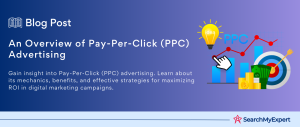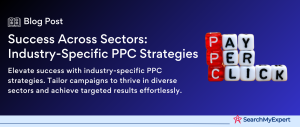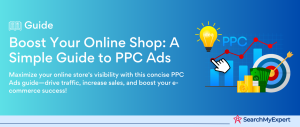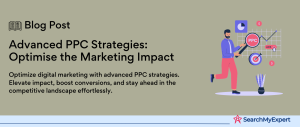PPC Campaign Optimization
Pay-Per-Click (PPC) campaign optimization is a critical aspect of digital marketing, pivotal in enhancing the effectiveness and efficiency of online advertising efforts. This introduction will define PPC campaign optimization, highlight its impact on key metrics, and stress the importance of ongoing optimization.
Defining PPC Campaign Optimization
- What is PPC Campaign Optimization?: It involves refining various elements of PPC campaigns, such as keywords, ad copy, and bidding strategies, to improve performance and achieve desired advertising outcomes.
- Importance in Advertising: Effective optimization is essential for maximising ad spend efficiency, improving campaign performance, and achieving better ROI.
Impact on Key PPC Metrics
- Influence on CTR, CPC, and ROI: Optimising campaigns can significantly impact Click-Through Rate (CTR), Cost-Per-Click (CPC), and overall Return on Investment (ROI). Higher CTR indicates better ad relevance, while lower CPC can lead to cost savings and improved ROI.
- Measurable Outcomes:
Effective optimization directly correlates with measurable improvements in these key performance indicators.
The Need for Continuous Optimization
- Ongoing Process: PPC campaign optimization is not a one-time effort but a continuous process that evolves with market trends, consumer behaviours, and technological advancements.
- Lifecycle Approach: Throughout the campaign lifecycle, regular adjustments and refinements are necessary to maintain and enhance campaign performance.
Laying the Foundation: Keyword Research and Targeting
Effective keyword research and targeting form the cornerstone of successful PPC campaign optimization. This section will focus on identifying high-value keywords, organising them into relevant ad groups, and using negative keywords to enhance campaign precision.
Conducting Thorough Keyword Research
- Identifying Relevant Keywords: The first step in PPC campaign optimization is to identify keywords that are most relevant to your products or services. These should be terms your target audience is likely to use when searching for your offerings.
- Focusing on High-Value Keywords: Prioritise keywords that are not only relevant but also have the potential to drive conversions. Consider factors like search volume, competition level, and user intent.
Organising Keywords into Tightly Themed Ad Groups
- Ad Group Structure: Organise your keywords into tightly themed ad groups. This helps in creating more relevant ad copy and landing pages, thereby improving the overall ad quality.
- Enhancing Search Relevance: Well-organised ad groups contribute to higher ad relevance, positively impacting the quality score, which can lead to better ad placements and lower costs.
Utilising Negative Keywords
- Excluding Irrelevant Searches: Negative keywords are used to exclude unwanted search terms. By defining negative keywords, you can prevent your ads from showing up in irrelevant searches, reducing wasted ad spend.
- Refining Campaign Targeting: Regularly updating your list of negative keywords helps in refining your targeting, ensuring that your ads are displayed to the most relevant audience.
Crafting Compelling Ad Copy
Creating effective ad copy is crucial in PPC campaigns, as it directly influences click-through rates and overall campaign performance. This section covers the essentials of writing clear, persuasive ad copy that resonates with your target audience and drives conversions.
Writing Clear and Concise Ad Copy
- Highlighting Benefits: Focus on the benefits of your product or service. Clear and concise ad copy should communicate the value proposition to your audience effectively.
- Simplicity and Clarity:
Ensure your ad copy is straightforward and easy to understand. Avoid jargon and complex language that might confuse the audience.
Incorporating Relevant Keywords
- Natural Integration of Keywords: Include relevant keywords in your ad copy to improve search relevance and ad visibility. Keywords should be integrated naturally, maintaining the flow and readability of the text.
- Keyword Relevance: Align the keywords with the user’s search intent. This ensures that your ad appears more relevant to what the user is searching for, potentially increasing CTR.
Using Compelling Calls-to-Action (CTAs)
- Action-Oriented Language:
Use strong, action-oriented language in your CTAs to encourage users to take the desired action, whether it’s making a purchase, signing up, or learning more. - Visibility of CTAs: Make sure your CTAs are prominent and easy to locate within the ad copy. A clear CTA can significantly impact the ad’s effectiveness in driving conversions.
Optimising Landing Pages for Conversions
The effectiveness of a PPC campaign heavily depends on the quality and optimization of its landing pages. This section discusses designing conversion-focused landing pages that align with ad copy and search intent, ensuring clear messaging and strong calls to action.
Designing Conversion-Focused Landing Pages
- Alignment with Ad Copy:
Ensure your landing page content closely matches the message in your ad copy. This consistency reinforces the user’s expectations set by the ad and improves the likelihood of conversion. - Focus on User Experience: Design landing pages with the user in mind. They should be easy to navigate, visually appealing, and load quickly, providing a smooth and engaging user experience.
Crafting Clear and Concise Page Messaging
- Highlight Value Proposition:
Clearly articulate the value proposition of your product or service. Users should immediately understand the benefits and why they should choose your offering. - Simplicity is Key:
Avoid overwhelming users with too much information. Keep the messaging focused and to the point, making it easy for users to grasp the key benefits quickly.
Implementing Strong Calls to Action (CTAs)
- Prominent and Clear CTAs:
CTAs should be easily identifiable and compelling. They should stand out on the page, either through contrasting colours, size, or placement. - Guide User Action: CTAs should guide users on what to do next – whether it’s making a purchase, filling out a form, or downloading a resource. Ensure that the action you want users to take is clear and straightforward.
Bid Optimization for Efficiency and Effectiveness
Bid optimization is a critical aspect of PPC campaign management, directly impacting the cost-effectiveness and overall performance of your ads. This section will address strategies for monitoring and adjusting bids, utilising automated bidding, and employing bid adjustments for optimal campaign efficiency.
Monitoring and Adjusting Bids Based on Performance
- Performance Metrics Analysis: Regularly analyse key performance metrics such as Click-Through Rate (CTR), Cost-Per-Click (CPC), and conversion rates. This data is crucial for making informed bid adjustments.
- Responsive Bid Management:
Be proactive in adjusting bids based on campaign performance. Increase bids on high-performing keywords and consider reducing or pausing underperforming ones to maximise efficiency.
Utilising Automated Bidding Strategies
- Leveraging Machine Learning: Automated bidding strategies like Target CPA (Cost-Per-Acquisition) and Maximise Conversions use machine learning to optimise bids in real-time, based on the likelihood of achieving campaign goals.
- Efficiency and Scalability: Automated bidding can save time and resources by efficiently managing bids across numerous keywords, making it ideal for large-scale campaigns.
Employing Bid Adjustments
- Targeting Specific Audiences: Use bid adjustments to increase or decrease bids for specific audience segments, times of day, or devices. This allows for more precise targeting and better allocation of budget.
- Prioritising Campaign Elements: Adjust bids to prioritise certain aspects of your campaign, such as focusing more budget on high-conversion times or locations.
Performance Analysis and Reporting
Regular and thorough analysis of PPC campaign performance is essential for understanding its effectiveness and identifying areas for improvement. This section will focus on how to effectively track and interpret key metrics, and how to use these insights for continuous optimization.
Regular Review and Analysis of Campaign Data
- Consistent Monitoring: Establish a routine for regularly reviewing campaign data. This enables timely identification of trends, issues, and opportunities.
- Comprehensive Data Analysis: Examine various metrics like impressions, clicks, conversions, and overall ROI. Each metric offers insights into different aspects of the campaign’s performance.
Tracking Key Performance Metrics
- Importance of Key Metrics: Metrics such as impressions, clicks, conversions, and ROI are vital for assessing the effectiveness of your PPC campaigns. They provide a clear picture of how well your ads are reaching and engaging the target audience.
- Utilising Analytics Tools: Leverage analytics tools to gather and analyse these metrics. Many PPC platforms offer robust analytics capabilities that can help you dive deep into campaign performance.
Utilising Data-Driven Insights for Optimization
- Informed Decision Making: Use the insights gained from performance data to make informed decisions about ad copy, keyword targeting, bidding strategies, and landing page design.
- Ongoing Optimization: Continuously apply these insights to optimise various elements of your campaigns. Regular adjustments based on data can significantly improve campaign performance over time.
Conclusion
PPC campaign optimization is an ongoing journey, not a destination. To maintain and enhance the effectiveness of your campaigns, it’s crucial to adopt a mindset of continuous improvement and refinement. This section will explore strategies for ongoing optimization and the importance of staying updated with PPC trends and technologies.
Viewing PPC Campaign Optimization as an Ongoing Process
- Dynamic Nature of PPC: The PPC landscape is continuously evolving. Market trends, consumer behaviours, and algorithm updates can all impact the effectiveness of your campaigns.
- Adaptability is Key: Being adaptable and ready to refine your strategies in response to these changes is essential for sustained success in PPC advertising.
Experimenting with New Strategies and Ad Variations
- Testing and Learning: Regularly experiment with new ad formats, targeting options, and bidding strategies. A/B testing different variations of ad copy and landing pages can reveal insights into what resonates best with your audience.
- Iterative Improvements: Use the results of these experiments to make iterative improvements to your campaigns. Even small tweaks can lead to significant enhancements in performance.
Staying Updated on the Latest PPC Trends and Technologies
- Keeping Abreast of Industry Changes: Stay informed about the latest trends and advancements in PPC. This could include new features in ad platforms, changes in user search behaviour, or emerging technologies like AI and machine learning.
- Leveraging Advanced Tools and Resources: Utilise advanced tools and resources available in the market. Keeping up with industry blogs, attending webinars, and participating in forums can provide valuable insights and strategies for optimising your campaigns.
Elevate your ad game with top-tier PPC Services.
Table of Contents
Toggle






